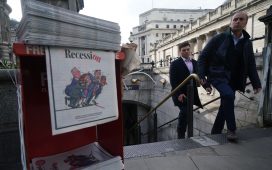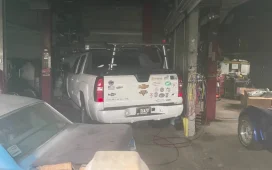Hanaa Kadry was driving two clients home from the airport on a recent night in St. Paul, Minn., when her Chevrolet Suburban hit one of the harsh facts of life in the northern city.
“My whole front end just kind of popped in and popped back out” as they hit the biggest pothole she had ever encountered in her 13 years as a limo driver, she said.
“I said, ‘Oh! Is everybody OK? Good thing we didn’t have a cup of hot coffee in our hands,’” she said. It left her stranded on the side of the road for hours and cost her more than $700 in repairs.
How potholes form
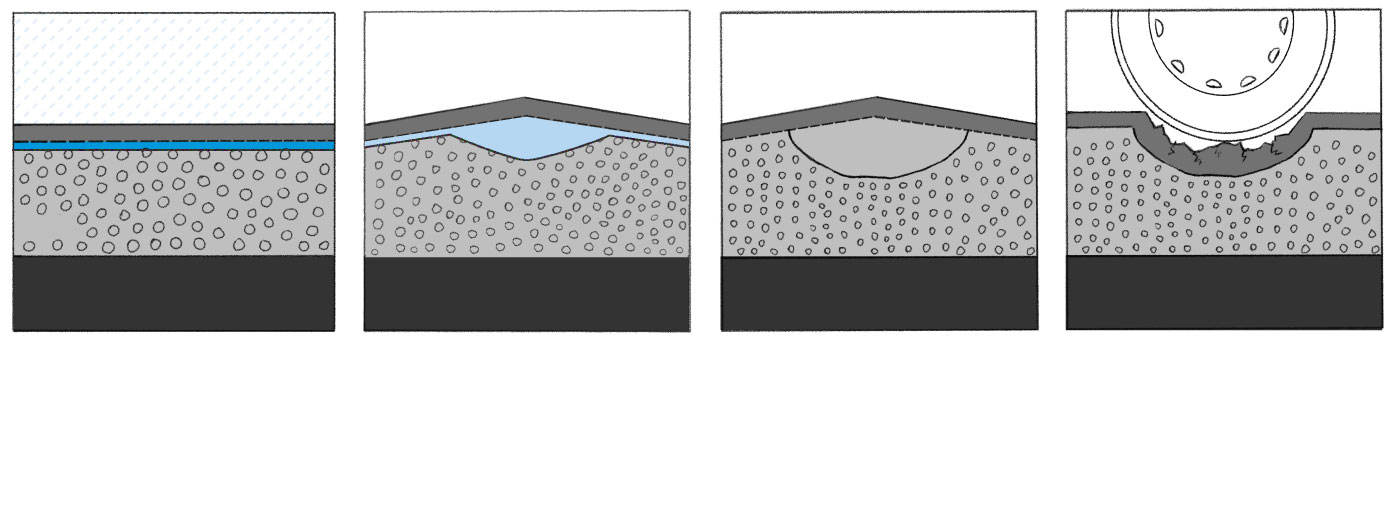
Rainwater or melted snow and ice flow through cracks in the pavement and pool
under the surface.
The water freezes, making the pavement rise and weakening it.
As the temperatures rise, the ice melts
and contracts,
forming a gap under the raised pavement.
The weight of vehicles that drive over the gap collapses the pavement into a pothole.
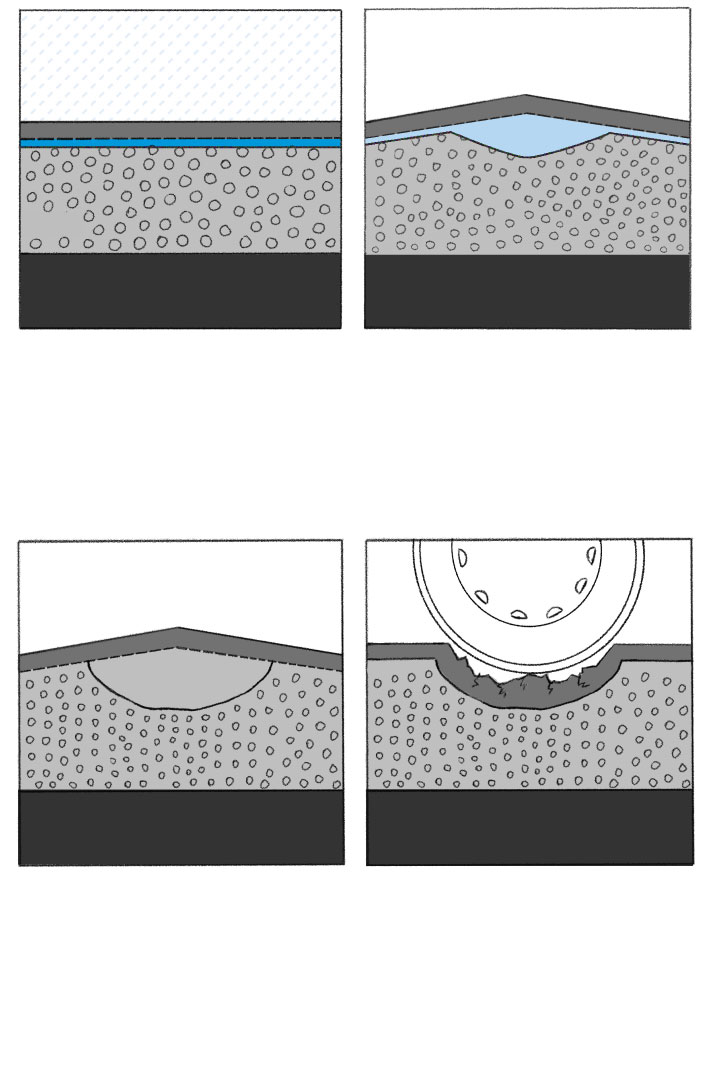
Rainwater or melted snow and ice flow through cracks in the pavement and pool
under the surface.
The water freezes, making the pavement rise and weakening it.
As the temperatures rise, the ice melts
and contracts,
forming a gap under the raised pavement.
The weight of vehicles that drive over the gap collapses the pavement into a pothole.
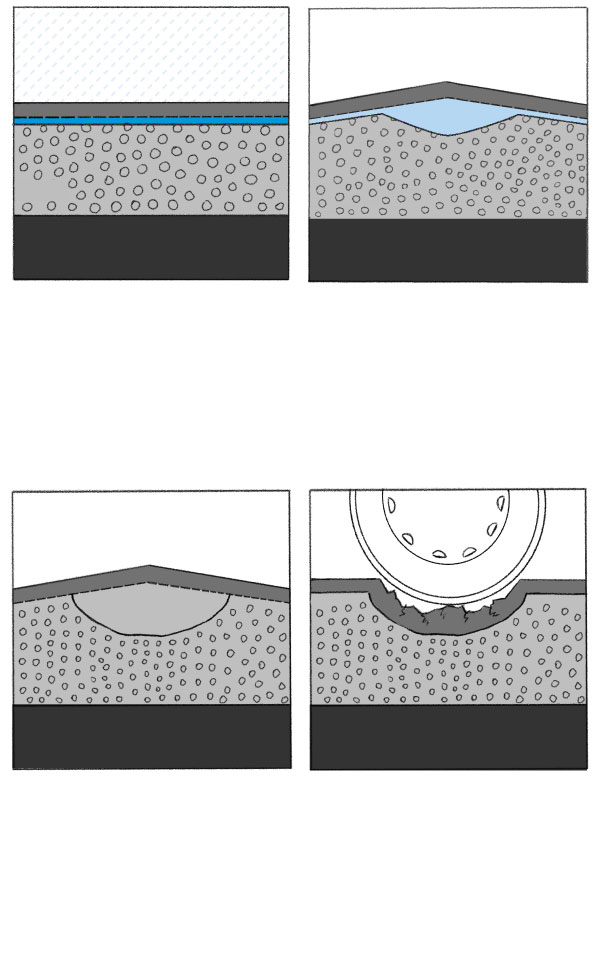
Rainwater or melted snow and ice flow through cracks in the pavement and pool under the surface.
The water freezes, making the pavement rise and weakening it.
As the temperatures rise, the ice melts
and contracts,
forming a gap under the raised pavement.
The weight of vehicles that drive over the gap collapses the pavement into a pothole.
Many cities in colder climates are all too familiar with the freeze-and-thaw cycles that chew up roads as melting snow and ice ooze into cracks in the pavement and then expand as they freeze overnight, forming potholes. But St. Paul officials say this year’s unique weather—and roads that frankly already needed some help—have created the worst pothole season in a generation.
The Twin Cities of St. Paul and Minneapolis have had more than 81 inches of snow so far this season, a tie for seventh in all-time snowiest winters there, according to Tyler Hasenstein, a meteorologist with the National Weather Service’s Twin Cities Forecast Office.
On top of that, the area had three periods of rain during what are normally the coldest months, Mr. Hasenstein said. “We’re generally mostly snow and maybe a few events that are kind of a wintry mix. But just a pure, cold rain isn’t something we get all that often.”
The extra moisture, combined with long-term underspending on roads, created a ferocious pothole season, said Sean Kershaw, St. Paul’s director of public works. He appeared this past week at the state legislature to support a city plan for a ballot proposal on a 1-cent sales tax for roads and parks. “We’ve had a short-term awful winter, combined with a long-term ‘we’ve got to fix our streets,’” he said.
Other pothole-prone cities such as Chicago, Detroit, Boston and Des Moines, Iowa, all had relatively mild winters and therefore average to below-average pothole seasons, officials in those cities said.
An official in Erie County, N.Y., where a blizzard in December dumped more than 50 inches of snow on the Buffalo region, said pothole complaints are rolling in, but it isn’t clear yet whether this pothole season will be worse than other years.
Potholes are tough to patch in the winter because hot asphalt plants can’t open until weather warms up in the spring, leaving crews to use a material called cold mix that doesn’t adhere as well and can sometimes pop back out with the next freeze-thaw—or at the end of a snowplow blade during the next snowstorm, Mr. Kershaw said.
St. Paul officials received 85 claims for pothole damage to residents’ cars last year and 250 in the first two months of this year, said Lisa Hiebert, a spokeswoman for the public works department. The median claim was $800.
One road in the city has gotten so chewed up that workers have posted orange signs warning drivers to slow down to either 20 or 35 miles an hour in different sections instead of the usual 50, said Ms. Hiebert. Patching there has become almost impossible, she said.
“Imagine that you’ve got a bowlful of Oreo cookie crumbs, and you’re spreading frosting on top of that to try to get it to all stick together. It just doesn’t hold,” she said.
Still, there is some hope. One nearby hot asphalt plant did manage to open March 20, making patching much more effective, she said. The city is hoping to open its own asphalt plant by the end of next week, Ms. Hiebert said.
St. Paul officials spent about $2.3 million on pothole patching last year, but they aren’t sure how much more they will spend this year, Ms. Hiebert said. In Minneapolis, officials said they expect to spend about $1 million extra on winter maintenance this year, about the same as 2014, the worst pothole year in recent history in that city.
Glenn Mitchell, a retired airline mechanic in St. Paul, said both of his adult daughters lost tires to gaping potholes last month.
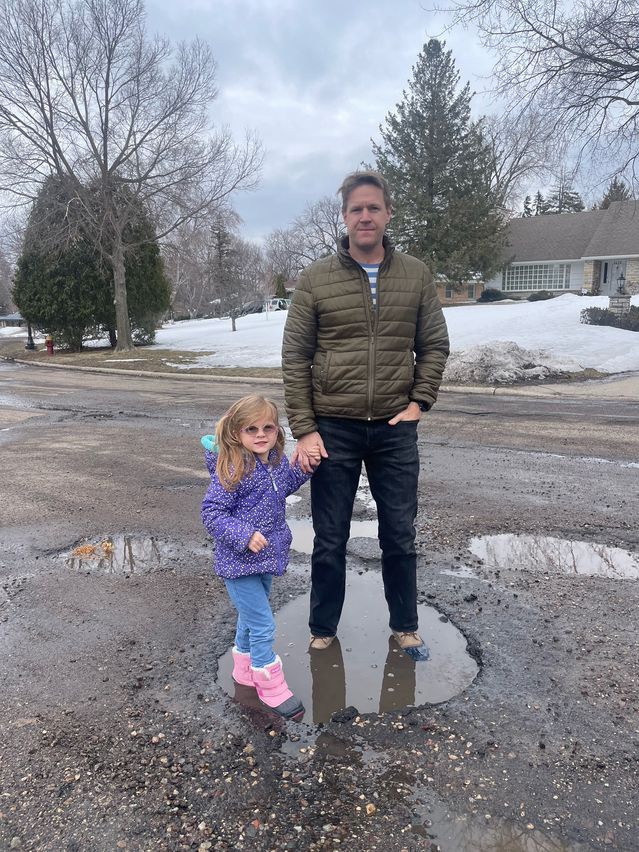
Nate and Hadley Hood ran the photo contest of the best pothole.
Photo:
Nate Hood
“It’s like a war zone,” he said. “It’s crazy.”
Nate Hood, a 39-year-old urban planner, was walking his dog earlier this winter when he saw a car swerving down the road. “I thought, ‘Oh, my God, this guy’s drinking and driving.’ And then I realized he was just dodging potholes very soberly,” he said.
After seeing complaints on social media about the potholes, he decided to have some fun with the problem, so he and his 5-year-old daughter, Hadley, hatched a plan for a contest for the best pothole photo, which she would judge.
They got around 24 entries mostly from St. Paul over a few days, he said. The winner was a photo of a pothole with a unicorn stuffed animal next to it. “She really gravitated toward that one,” Mr. Hood said. Runners-up included a pothole that looked a bit like a fox and one with two exposed sections of brick that reminded Hadley of secret portals, he said.
The winner got a $10 gift card from Target, Mr. Hood said.
—Jimmy Vielkind contributed to this article.
Write to Joe Barrett at Joseph.Barrett@wsj.com
SHARE YOUR THOUGHTS
Have you noticed worsening road conditions in your neighborhood this winter? Join the conversation below.
Copyright ©2022 Dow Jones & Company, Inc. All Rights Reserved. 87990cbe856818d5eddac44c7b1cdeb8

